What is a dink in pickleball?
When exploring the heart of pickleball, understanding the dink shot is essential. A dink refers to a soft, controlled shot typically executed near the net with the primary aim of landing in the opponent's non-volley zone (commonly known as the kitchen). By choosing the right timing and placement, players can create opportunities to win points by forcing their opponents into uncomfortable positions. This tactical play often leads to unforced errors, where the opponent either misses the shot or returns it poorly.
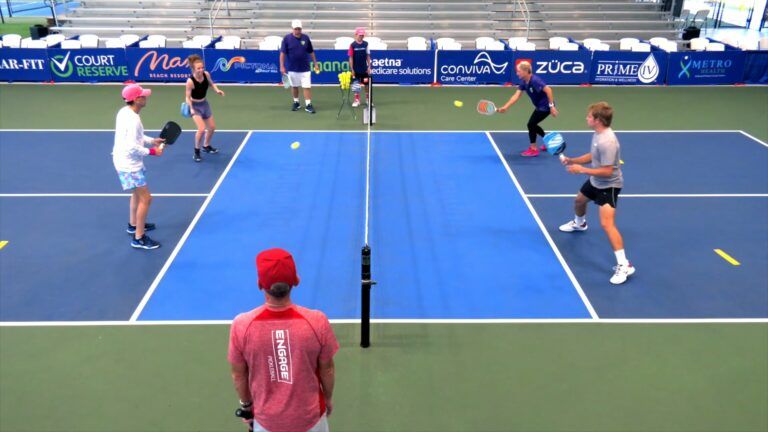
Understanding the basics
A dink is not just about gently sending the ball over the net; it's a strategic maneuver. Picture this: you're standing on the kitchen line, eyes focused, knees slightly bent, paddle poised. The objective is to strike the ball in a manner that allows it to drop just over the net, making it challenging for your opponent to respond effectively. The beauty of the dink lies in its potential to disrupt your opponent's rhythm, compelling them to adjust their game while you maintain your control.
The kitchen is a crucial part of this strategy. It’s a space where dynamic plays unfold, and skillful placement can lead to incredible advantages. By utilizing the dink effectively, players can extend rallies and encourage strategic positioning on the court. Mastering this skill adds a layer of complexity to one’s game, as it necessitates not just physical prowess but also acute awareness and tactical thinking.
Distinguishing dinks from drop shots
While both dinks and drop shots serve to disrupt an opponent's game, they're executed and function quite differently. The most notable distinction lies in their starting points. A dink originates from the non-volley zone line, while a drop shot stems from deeper within the court, often aimed at surprising the opponent with its abrupt transition from power to finesse.
Here’s a simple comparison to clarify:
| Feature | Dink | Drop Shot |
|---|---|---|
| Starting Point | Non-volley zone line | Deeper in the court |
| Execution Style | Soft, controlled touch | More aggressive, aimed at surprising |
| Primary Purpose | To set up a point by forcing difficulty | To catch the opponent off-guard |
| Trajectory | Gentle arc over the net | Flatter with more speed |
By understanding the nuances between these two shots, players can enhance their tactical toolkit, making them more versatile on the court.
Why dinking is crucial to winning
The importance of the dink can hardly be overstated when it comes to executing a winning strategy. Not only does it provide control over the pace of the game, but it also opens up opportunities for error from the opponent.
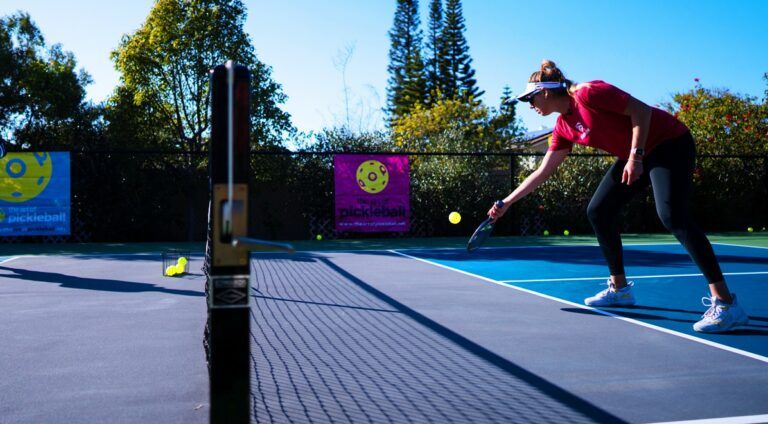
Control the pace and rhythm
Dinking is an invaluable tool for controlling the game's tempo. Just as a skilled conductor guides an orchestra, effective dinking allows a player to dictate the flow. By slowing down the game through these gentle shots, you can disrupt your opponent's rhythm, forcing them to adapt to your pace rather than establishing their own.
Consider how dinking shifts the dynamic of a game. Rather than engaging in a back-and-forth rally dominated by powerful shots, players can create a scenario where finesse reigns supreme. This tactical play requires patience and strategic thinking. Utilizing the dink not only draws the opponent in but can lead to opportunities for more aggressive shots, positioning you for success as the game unfolds.
Force errors and create opportunities
Another inherent advantage of the dink lies in its ability to induce errors. When a player executes a well-placed dink, it compels the opponent to generate their own power, increasing the chances of unforced errors. Imagine a chess player exploiting an oversight; similarly, you can place your opponent in a predicament where they must make a decision that could lead to a mistake.
Here are a few ways to capitalize on dinking to create opportunities:
- Forced Movement: Dinking can move your opponent out of position, opening them up for a follow-up attack.
- Creating Angles: Executing sharp angles with your dinks increases the likelihood of your opponent making a poor return.
- Setting Up Winning Shots: Good placement can set the stage for a powerful shot, turning defense into offense.
Mastering the dink skill provides a tactical advantage; it's not merely a defensive maneuver but a way to pressure your opponent into making crucial errors.
Dinking as both offense and defense
While often viewed as a defensive strategy, dinking can be executed in an offensive manner. Think of it this way: a skilled player utilizes the dink not just to maintain control, but also as a means to pressure opponents. By effectively mixing offensive and defensive plays, the game becomes an intricate balance of strategy.
Utilizing the dink offensively could result in forcing opponents to pop up the ball, creating opportunities to capitalize on their overcommitment. Moreover, it acts as a defensive strategy against hard-hitting opponents by neutralizing their aggression.
Here’s a quick comparison of offensive and defensive dinking:
| Type | Objective | Execution Style |
|---|---|---|
| Offensive Dinking | Pressuring opponent, setting up attacks | Aggressive placement, creating opportunities |
| Defensive Dinking | Regaining control against hard-hitting shots | Controlling the game, maintaining positioning |
In the world of pickleball, embracing the dual nature of the dink can dramatically alter the outcome of your games.
Dinking technique: Step-by-step guide
Mastering dinking requires understanding the nuances that underpin its successful execution. From grip to body positioning, each element plays a pivotal role in enhancing your dink.
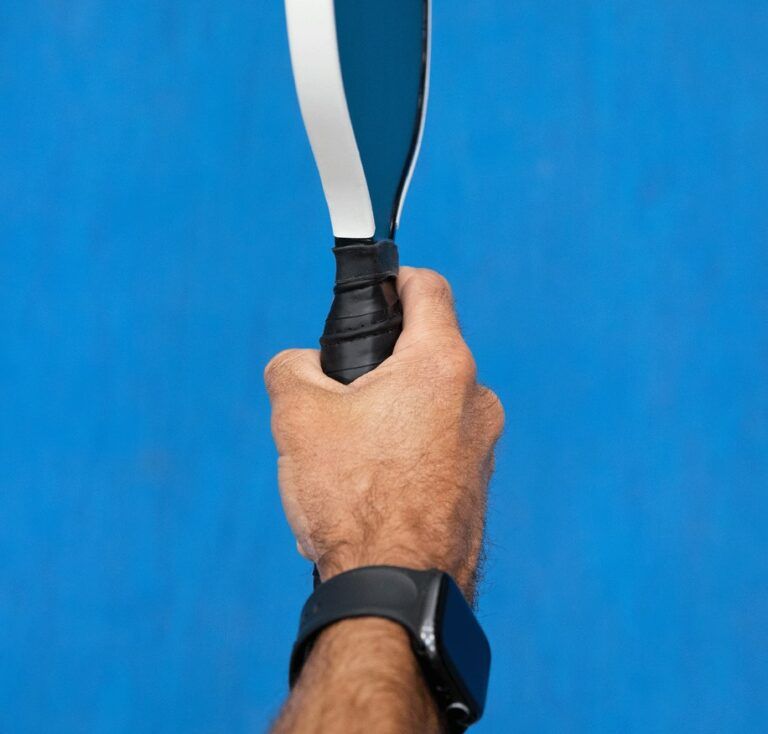
The perfect grip for dinking
Having the right grip is fundamental. The continental grip, widely recognized in pickleball, offers a wealth of benefits for executing dinks with precision and control. With this grip, players can easily rotate the paddle to adapt to various shots while maintaining a relaxed yet firm hold.
Here’s how to achieve a comfortable continental grip:
- Hold the Paddle: Position the base knuckle of your index finger against the top bevel of the paddle.
- Finger Placement: Extend the other fingers naturally along the handle for balance and control.
- Thumb Position: Place your thumb behind the paddle for additional stability.
Visuals can illustrate the perfect grip, demonstrating its importance in execution. The right grip aids in transferring energy efficiently while providing the necessary finesse to create effective dinks.
Stance and body positioning for success
Next, the importance of an athletic stance cannot be overlooked. A low, athletic stance not only maximizes your reach but positions you to respond effectively to any return from your opponent. Bend your knees slightly, ensuring a straight back, which helps in maintaining balance.
Consider these foot positioning options for optimal results:
- Parallel to the Kitchen Line: This stance provides a solid foundation for lateral movement.
- Neutral Stance with One Foot Ahead: This tactic encourages quicker movement to either side, allowing for greater adaptability.
Incorporating proper positioning into your dinking technique enhances your ability to respond to unpredictable shots and keep your opponent guessing.
Mastering the dinking motion
The dinking motion requires finesse more than force. Envision a gentle lift or push rather than an aggressive swing. A compact swing with minimal backswing promotes better control and accuracy.
Key points to remember include:
- Minimal Wrist Action: Keep your wrist firm to ensure consistency.
- Gentle Follow Through: After the shot, allow your paddle to continue smoothly toward the target without overextending.
By focusing on these mechanics, players can develop a consistent and effective dinking strategy that significantly enhances their overall game.
Follow through and recovery
Mastering the follow-through is crucial. Ensure your paddle continues its path toward your target, staying low and compact. Quickly recover to a neutral ready position, preparing for your opponent's response. This quick recovery is vital for anticipating the next move, keeping you engaged in the rally.
By incorporating these techniques into your practice, you lay the foundation for a solid dinking strategy in your pickleball games.
Strategic dink placement
Placement is the cornerstone of a successful dink. Mastering where to place your shots can determine whether you set up an attack or miss an opportunity.
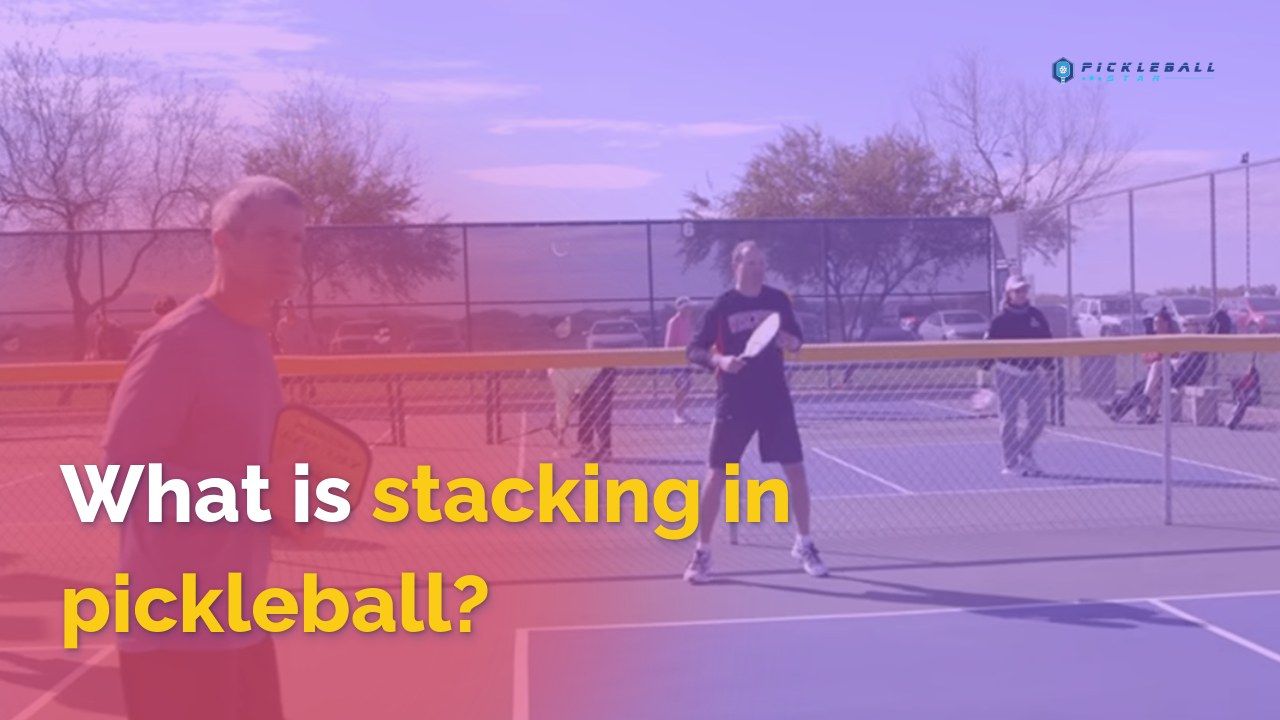
Targeting your opponent's weaknesses
Effective dinking involves keen observation. Identify your opponent's weaknesses by noticing their preferred shots, and target areas where they struggle. Common targets may include the backhand, feet, or any open areas on the court.
Here are specific strategies for targeting weaknesses:
- Backhand Targeting: Many players possess a stronger forehand; aim for their backhand corner.
- Feet: Low shots that bounce near your opponent's feet can create discomfort and lead to poor returns.
- Court Openings: Utilize areas where your opponent shows vulnerability, forcing them to move and adjust.
Recognizing and exploiting these weaknesses establishes a tactical upper hand, increasing your chances of winning the point.
Varying your dinks to keep opponents guessing
An effective strategy is to keep your dinks unpredictable. By varying depths whether short dinks or more extended plays and using angles like cross-court or down the line, you can keep your opponents constantly adjusting.
Consider the importance of spin, such as topspin or slice, to add an additional layer of complexity to your dinks. By incorporating these elements, you enhance your game, ensuring that opponents remain off-balance.
Creating openings for attack
Dinks can be a powerful tool to create opportunities for attacks. Utilize them to move opponents out of position and identify areas ripe for exploitation. As you force your opponent to shift, take note of gaps in their coverage, and set yourself or your partner up for an attack.
Visual aids can illustrate court positioning, demonstrating how effective dinking can manipulate your opponent’s movements, leading to a beneficial arrangement for your team.
Advanced dinking techniques
Once you've grasped the fundamental dinking skills, it's time to venture into advanced techniques. These methods can elevate your game, providing you with added versatility on the court.
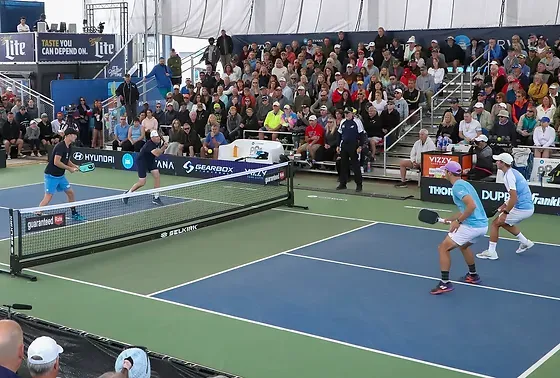
Dink volleys: Taking time away from your opponents
A dink volley is executed by striking the ball before it bounces, creating a flatter trajectory that can catch opponents off-guard. The benefit lies in the reduced reaction time for your opponents, making it a highly effective tactical play.
Step-by-step instructions for executing a dink volley effectively include:
- Positioning: Stand slightly closer to the net than usual, anticipating the ball's trajectory.
- Focus on Contact: Keep your eyes fixed on the ball, ensuring a solid connection.
- Short Movement: Use a compact swing, positioning your paddle for a swift, controlled shot.
By mastering the dink volley, players can take control of points and maintain momentum in their favor.
Dink attack: Turning defense into offense
The dink attack selectively turns defensive play into offensive strategy. This technique not only pressures opponents but provides them less time to react to your shots. The key lies in disguise; by presenting a seemingly defensive shot that transitions into an aggressive attack, you'll catch your opponent unprepared.
Implementing this strategy requires awareness and quick decision-making, assessing when to pivot from defense to offense.
Spin dinks: Adding deception to your game
Incorporating spin into your dinks adds a level of unpredictability that can bewilder opponents. For instance, using a topspin can cause the ball to bounce higher, forcing surprise returns or generate slice for sharp angles that make returns challenging.
Specialty dinks: Mastering unconventional shots
Finally, mastering specialty dinks, such as the erne dink, introduces unique elements into your gameplan. An erne dunk is executed from outside the court, cleverly using the net as a barrier between your shot and the opponent. This technique requires timely execution and a keen understanding of court dynamics but can lead to thrilling opportunities.
Common dinking mistakes to avoid
Even the most proficient players can fall prey to common dinking mistakes. Awareness is the first step to overcoming these pitfalls, ensuring consistent improvement in your game.
Hitting the ball too high: The attacker's dream
One frequent error is sending the ball too high, making it an easy target for your opponent. High dinks can result in a "pop-up," providing attackers with the perfect setup to respond aggressively. Focus on keeping your dinks low and close to the net, where they’re challenging to return effectively.
Dinking directly at the opponent: An easy return
While practicing control is crucial, targeting your opponent directly can lead to clear returns. Aim for unpredictable placements, forcing movement rather than predictable shots.
Overusing wrist action: The path to inconsistency
Excessive wrist action can lead to erratic shots and diminished control. Keep your wrist firm during dinking, aiming for consistency in placement.
Taking a big backswing: Telegraphing your shot
Avoid the instinct to take a wide backswing, as this can reveal your intentions. Instead, practice compact swings to keep your opponents guessing about your next move.
Standing still: Limiting reach and reaction time
Being stationary can significantly impact your ability to respond effectively. Consistently practice footwork and movement skills to ensure that you're always in a position to reach the ball.
Dinking drills to sharpen your skills
Practical dinking drills provide an effective means for sharpening your dinking skills. By incorporating specific practices into your training, you can see substantial improvements in execution and overall performance.
Target practice: Honing your accuracy
Set up cones or targets on the court and focus on hitting these specific areas with your dinks. This exercise promotes control and accuracy, essential skills for effective dinking.
Dink rallies: Building consistency and control
Partner up and engage in dink rallies, focusing on maintaining control and timing rather than power. This practice allows you to work on consistency, as well as develop an understanding of when to attack and when to defend.
"X" drill: Mastering court positioning and targeting
Incorporate the "X" drill into your routine, where players alternate hitting dinks to each other from various positions on the court. This allows you to practice targeting while ensuring proper positioning and movement.
The mental game of dinking
Finally, the mental aspect of dinking plays a crucial role. Patience, focus, and confidence are imperative components of any player’s strategy when executing dinks.
Patience: The key to winning long rallies
Dinking effectively requires patience, especially in extended rallies. Practice staying composed and trusting your shot selection as you wait for the best opportunity to capitalize.
Focus and anticipation: Reading your opponent
Developing the ability to read your opponent can enhance your tactical prowess. Observe their movements and tendencies, allowing you to anticipate their responses and adapt your play.
Visualization: Imagining success
Employ mental imagery techniques before matches or practice sessions. Visualizing successful dinks enhances confidence and execution during high-pressure situations.
Positive self-talk: Building confidence and resilience
Utilize positive self-talk to boost confidence. Reminding yourself of your successes and progress can inspire resilience during challenging games.
Conclusion
In conclusion, mastering the art of the dink in pickleball is a multifaceted endeavor. It requires a blend of technique, strategy, and mental fortitude. As players navigate the intricacies of dinking, they empower themselves to seize control of the game, outmaneuvering opponents while simultaneously developing their overall skills. Through dedicated practice and thoughtful execution, the dink transforms from mere soft shot into a powerful weapon on the court one that can dictate the flow of a match and lead to inevitable victory. With patience, focus, and practice, any player can elevate their game and embrace the strategic depth that dinking offers, ensuring they stand out in the ever-evolving landscape of pickleball.










